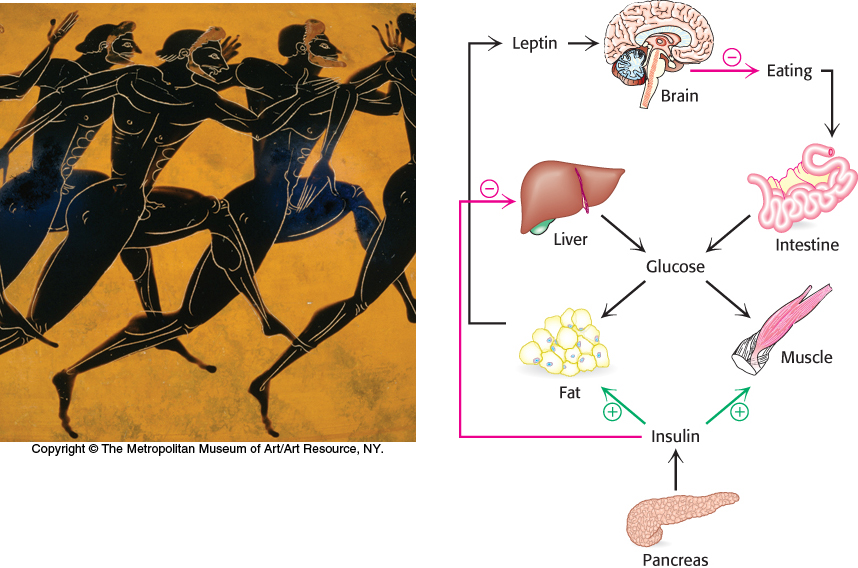The Integration of Metabolism
CHAPTER
27
801

OUTLINE
We have been examining the biochemistry of metabolism one pathway at a time. We have seen how useful energy is extracted from fuels and used to power biosynthetic reactions and signal-
Next, we will examine a significant perturbation of caloric homeostasis—
802
At the opposite end of the physiological spectrum from obesity and overnutrition are fasting and starvation, and we will examine the biochemical responses to these challenges. The chapter ends with a consideration of another biochemical energy perturbation—
We have already encountered instances of organismal energy regulation when we considered the actions of insulin and glucagon. Recall that insulin, secreted by the β cells of the pancreas, causes glucose to be removed from the blood and stimulates the synthesis of glycogen and lipids. Glucagon, secreted by the α cells of the pancreas, has effects opposite those of insulin. Glucagon increases the level of blood glucose by stimulating glycogen breakdown and gluconeogenesis. This chapter introduces two other hormones that play key roles in caloric homeostasis. Leptin and adiponectin, secreted by the adipose tissue, work in concert with insulin to regulate caloric homeostasis.